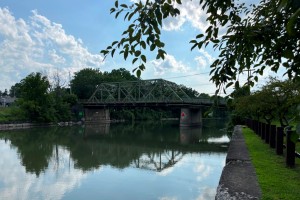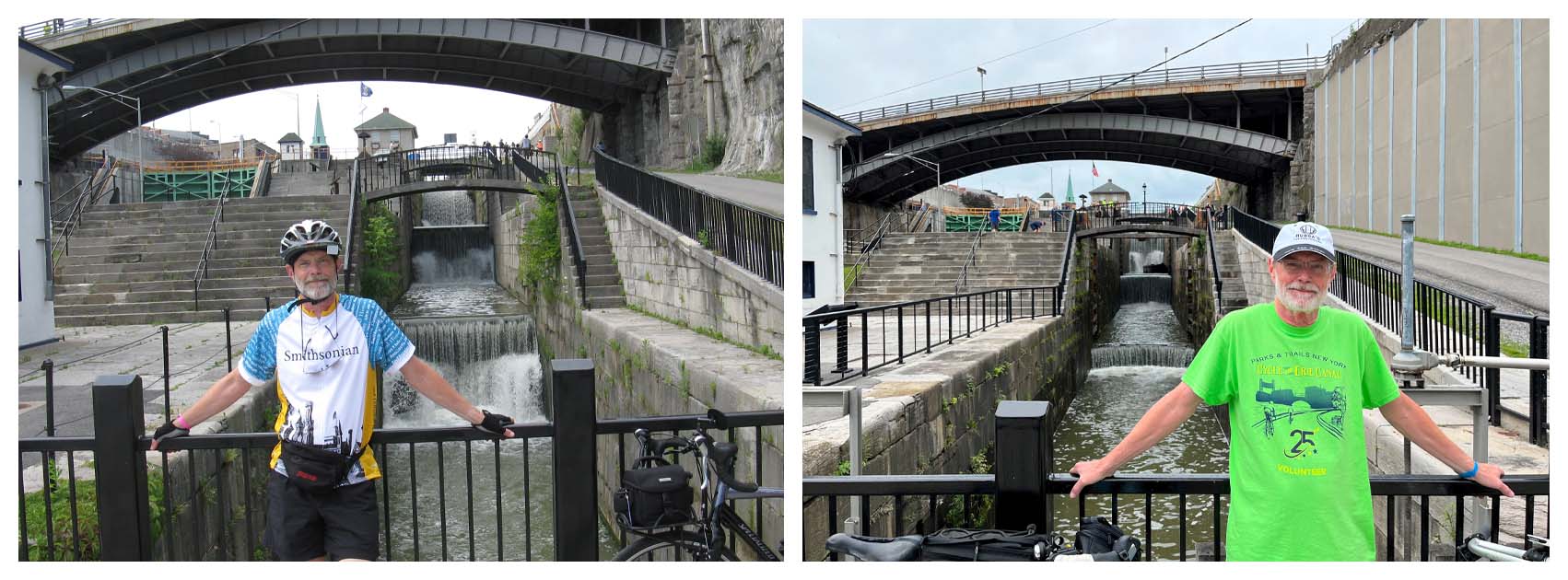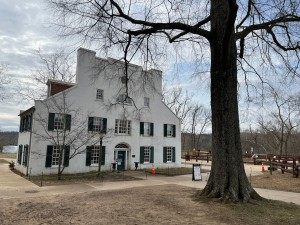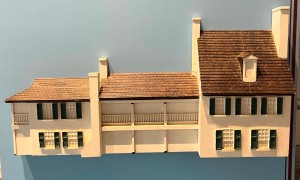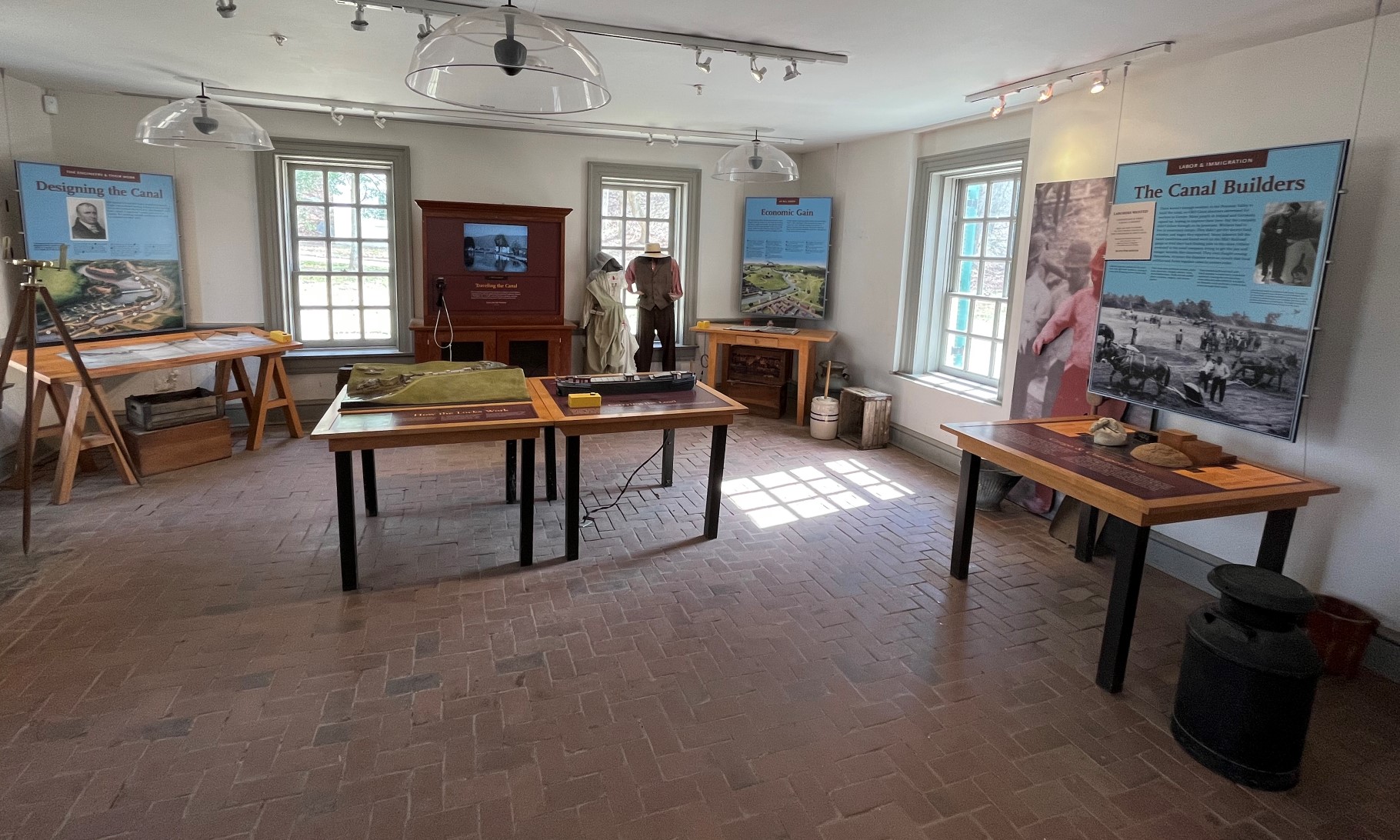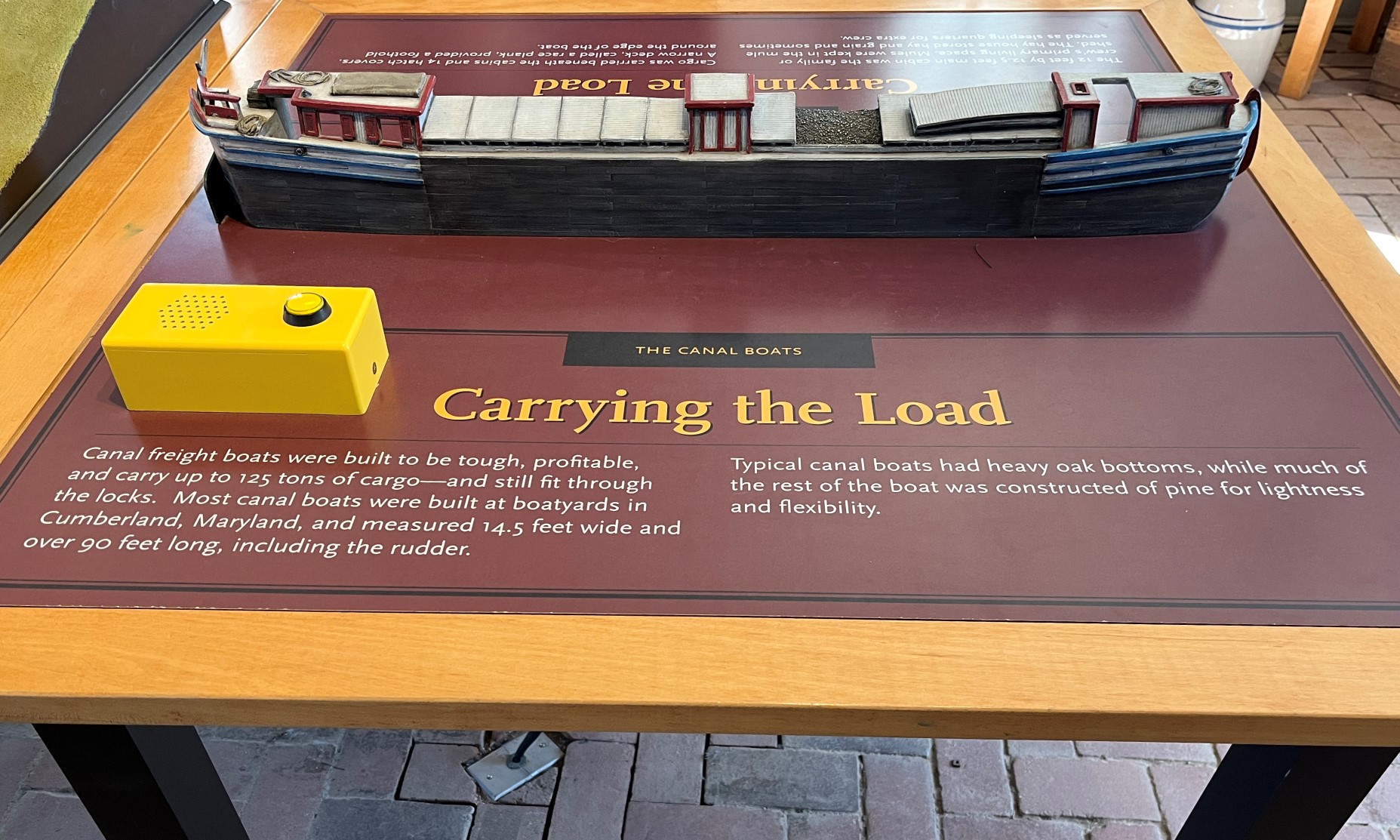Cycle the Erie Canal was not the longest or hardest of my many bicycle tours, but it had the most lasting impact. The friends I made on that 2011 trip, and the friends I made through them, revitalized bicycle touring for me and made traveling with friends something Sue and I now enjoy.
I’d thought about reprising that tour one day, but I knew I could not expect to recapture that same magic. Instead, I decided to try a different approach. I signed up for the 2023 tour not as a rider, but as a volunteer.
Across New York State by Bicycle
The annual Cycle the Erie Canal tour is a 400-mile bicycle trip from Buffalo to Albany. Organized and hosted by the nonprofit advocacy group Parks & Trails New York, it has a widespread reputation among cyclists as a well-run and highly enjoyable event. It attracts an unusually broad range of riders, from young to old, from across the United States and beyond. This year was the event’s 25th running.
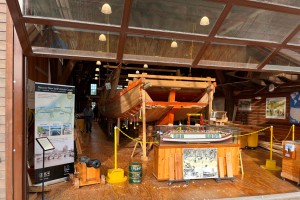
Riders gather in Buffalo on a Saturday in early July for registration and orientation. Then they set out Sunday morning and ride about 40 to 60 miles a day for eight days. They camp at overnight sites established at schools or parks, fuel up on catered breakfasts and dinners served in camp, and enjoy informative talks and live music during the evening.
It’s a complex undertaking. This year, some 650 riders took part, supported by about 100 volunteers along with Parks & Trails staff. The support team manages the overnight sites, hauls riders’ luggage from place to place, sets up morning and afternoon rest stops, helps riders with mechanical issues, and provides other services and assistance.
My Volunteering Idea
Most volunteers work every other day and bike the route on the alternate days. (Their bicycles are transported for them on the days they volunteer.) I wanted to try something different. I offered to volunteer for the first four days of the tour, and to help on registration day as well. I would drive myself between overnight sites and bring my bicycle, so I could do some exploring in places along the way.
The volunteer coordinator gratefully accepted my unconventional offer. She told me they needed help at the morning rest stops, so that’s where I was assigned. By signing up as a volunteer, my tour registration fee was waived. Volunteers participate for free.
An Uncertain Start
I drove up to Western New York on Friday and spent some time revisiting the area south of Buffalo where I’d grown up. On Saturday morning I moved on to the Nichols School campus in north Buffalo, the home base for the tour. After attending a meeting for rest stop volunteers, I asked around elsewhere about helping out. My help wasn’t needed. The small army of volunteers seemed to have things well in hand. I felt a little lost.
I looked around the campus for a good location to set up my tent and scouted out where all the restrooms and showers were. After pitching my tent in a carefully chosen spot, I biked around nearby Delaware Park, Buffalo State College, and the lovely adjacent neighborhoods, all areas I used to know intimately. Then I hung out in camp, restless and brooding a little over what I might have gotten myself into.
At the outdoor wine and cheese welcome reception just before dinner, I spotted a guy wearing the same “Cycle the Erie Canal 2011” tee-shirt I had on. We linked up and talked for a while, sharing histories (we both went to high school south of Buffalo) and touring notes. I then sat down on the grass with a woman from Baltimore, by way of Rhode Island and Washington, D.C., who was new to the event. We talked at length about cycling, Baltimore and Washington, and retirement, which she was contemplating. Those conversations boosted my mood and reminded me how much meeting people and socializing is one of the most rewarding aspects of a bicycle tour.
Ravenous Riders
I slept poorly that night, as I often do while camping. I was awake well before my targeted rising time of 5:30 a.m. That may seem dreadfully early, but it’s not on a bicycle tour. Being one of the early birds (and I wasn’t the earliest) pays off when it comes to restroom access and meal lines. I had to get myself squared away, get coffee and breakfast at the dining room, pack up my tent and other stuff and load it into my car, and be on the road by about 7:00, so I could get to the morning rest stop site by 7:30. It turned out that an hour and a half from getting up to getting out was plenty of time. I never felt rushed.
I needn’t have worried. I arrived before the rest stop coordinator and the truck bringing the supplies and two other volunteers. Along with a forth volunteer, we set up two tables beneath a pair of foldout shelters, put out hand sanitizer, and loaded the tables with assortments of fruits and snacks that varied somewhat each day—bananas, oranges, apples, pears, nectarines, cantaloupe; various kinds of granola bars, bags of chips and nuts, packs of cookies (Fig Newtons were a surprisingly big hit) and sundry other treats. One volunteer set up the critical water and Gatorade station for refilling cyclists’ water bottles. A bicycle mechanic set up shop to help riders with mechanical issues.
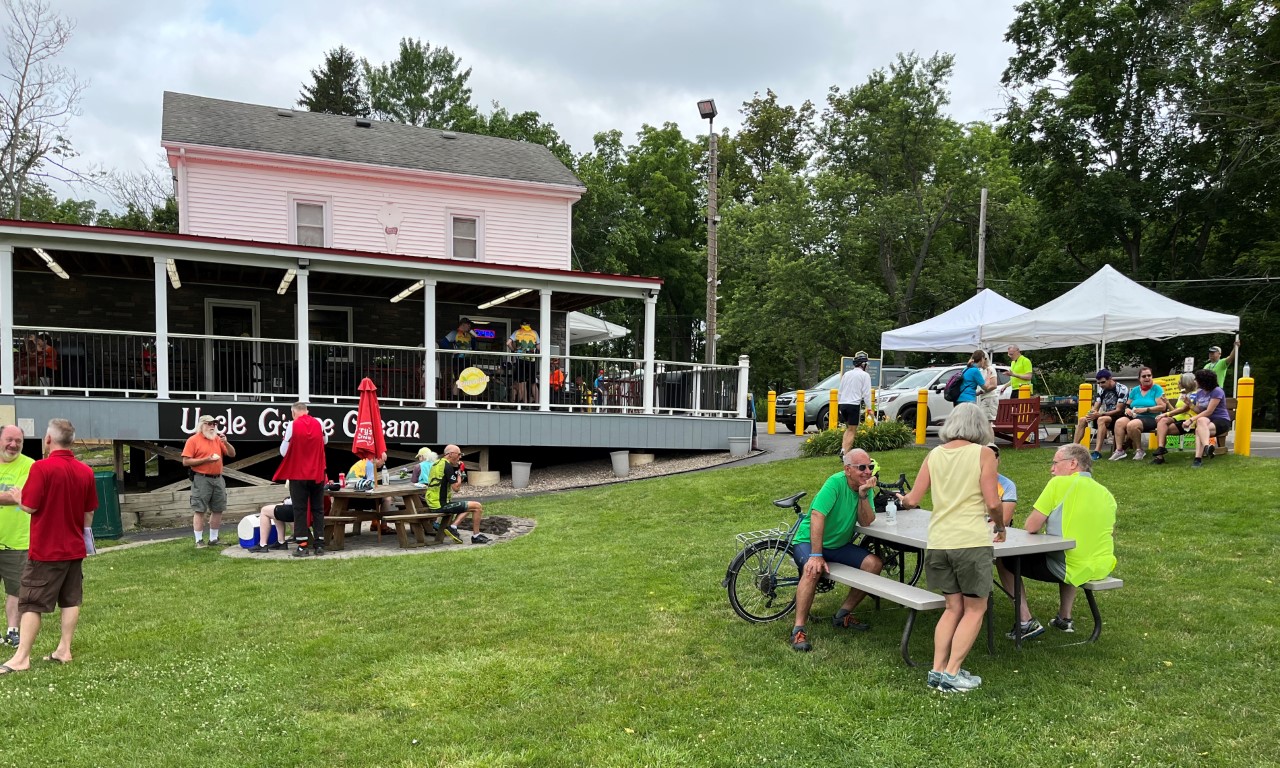
Then we waited until the first riders began streaming in, and then more, and then many, many more. I spent much of my time for the next couple of hours replenishing or replacing various items as we ran out. We went through an astonishing amount of food. It was hard to believe these riders had just had an all-you-can-eat breakfast just a short while ago. After that first 15 or so miles, they seemed famished.
Packing Up and Moving On
The rest stop was scheduled to be open from 8:00 to 11:00 a.m., but we had to stay until the last riders passed through. We waited until a pair of sweeps (designated riders tasked with bringing up the rear of the widely spread-out troop of cyclists, to ensure no one was left behind) cycled up to the rest stop and told us that everyone had made it. Then we could break down the site and pack up the truck. That first day, we were there until 12:30.
Once we were finished, the truck crew moved on to assist, if needed, at the afternoon rest stop 20 or 30 miles down the road. I headed off to do some exploring on my way to that evening’s campsite.

Each afternoon, as I drove around on my own, I roughly paralleled the route the cyclists were riding on the canal towpath. Over the next few days, I stopped off and walked around in some of the canalside towns they were passing through–Lockport, Medina, Spencerport, Pittsford, Fairport, Lyons, and Clyde. I revisited Lockport’s historic flight of five locks; the Medina Railroad Museum, with its gigantic HO scale model railroad; and the peppermint oil museum in Lyons. I took a side trip up to Sodus Point on Lake Ontario.




What I didn’t end up doing was biking. I was surprised to find that seeing those hundreds of cyclists along the route didn’t trigger an urge to join them. I felt quite content to drive around. But I also felt a little less a part of the touring group. I would arrive at the overnight site early; scout out tent sites, restrooms, showers, and other facilities; set up camp, and then relax until dinnertime. Evenings were for socializing, reading, writing notes, and planning tomorrow’s route and stopovers.
The End of the Tour, for Me
Seneca Falls was my last overnight site. Dinner was on our own, so I boarded a shuttle bus for the short ride into town. I got off at People’s Park, where a wine and cheese tasting table was set up for us at a farmer’s market.
After some sampling some local wines and cheeses, I had dinner outside at a nearby restaurant—beef on weck, a Western New York specialty. Afterward, I wandered around the downtown, visiting the It’s a Wonderful Life Museum (Seneca Falls was purportedly the inspiration for Bedford Falls in the beloved Frank Capra Christmas movie) and the Seneca Falls Heritage & Tourism Center. Then I caught the shuttle bus back to camp, just as a band was warming up for a concert in the People’s Park gazebo.
The next day, I drove to my fourth and last morning rest stop, at Port Byron Old Erie Canal Heritage Park. Today, we introduced cantaloupe, which was ripe and juicy and very popular. I spent most of my time slicing it up and scooping out the seeds and got very fast and efficient at it. After we packed up, my co-volunteers expressed their appreciation for my efforts, saying I was the hardest working volunteer on the team. I doubted that, but it was nice to hear.
As the rest stop truck drove off, I headed in a different direction, toward the Thruway to visit friends north of Albany, two and a half hours away. My part in this year’s Cycle the Erie Canal tour was over.
Afterward
I conceived of this trip as something of an experiment, to see if I could find a new way to become involved in bicycle touring that I might want to continue. I envisioned traveling up to New York every summer to take part in one of Parks & Trails tours, and using my free time to explore more of my home state. I also wanted to revisit my old hometown, which I hadn’t seen in 17 years. I accomplished everything I set out to do.
Would I volunteer for the Erie Canal tour again? I’m not sure. The appreciative words my fellow volunteers had for my efforts were a warm ending note. But I also felt that I was not entirely a part of the tour the way others were. Perhaps volunteering and riding on alternate days might be worth considering, but frankly I didn’t seem to miss the cycling and enjoyed having the freedom to drive myself around from place to place. So I don’t know.
What I do know is that I’ll have another chance to immerse myself in bicycle touring. In late July, I will drive back up to New York to take part in Parks & Trails’ first annual Cycle the Hudson Valley tour, this time as a rider. Over the course of a week, I and about 300 other cyclists will bike from Troy, just north of Albany, to Battery Park and the Brooklyn Bridge in New York City. Thus, I will complete my bicycle journey across New York State that I began in 2011.
I can’t wait.
David Romanowski, 2023


